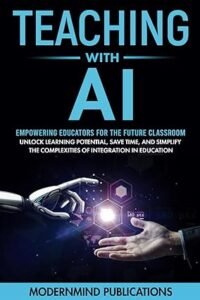In today’s rapidly evolving educational landscape, it is crucial to understand the differences between traditional book readers and digital learners. By defining and providing context for each group, we can gain insights into their preferences, habits, and characteristics, ultimately enabling us to cater to their diverse learning needs.
Bookish Bliss: Navigating the Minds of Avid Readers
Book readers refer to individuals who prefer consuming information through traditional printed books. They enjoy the tactile experience of holding a physical book, flipping through its pages, and engaging with the text in a tangible way. Book readers often appreciate the smell of ink and paper, the weight of a book in their hands, and the ability to make annotations or highlight passages. They tend to have a strong sense of attachment to physical books and value the aesthetic and sentimental aspects of reading.
Bytes of Knowledge: Understanding the Digital Learner Evolution
On the other hand, digital learners are individuals who embrace technology as a means of consuming information. They prefer reading on electronic devices such as e-readers, tablets, or smartphones. Digital learners appreciate the convenience and portability of carrying multiple books in a single device. They enjoy the ability to adjust font sizes, use search functions, and access additional resources instantly. Digital learners are often tech-savvy and comfortable navigating digital interfaces.
Turning Pages vs. Clicking Links: Contrasting Book Readers and Digital Learners
The key differences between book readers and digital learners extend beyond their preferred formats for consuming information. These differences encompass their learning styles, attitudes toward technology, and retention and comprehension abilities. Book readers tend to have a more linear learning style, following the sequence of a book from beginning to end. They may have a preference for physical note-taking and rely on spatial memory for retention. Digital learners, on the other hand, often have a more interactive learning style. They engage with multimedia content, utilize hyperlinks and interactive features, and may rely on search functions for quick access to information.
Balancing Act: Navigating the Advantages and Disadvantages of Digital Learning
When considering the advantages and disadvantages of each group’s preferences and habits, several factors come into play. Accessibility is a significant advantage of digital learning;
1. Accessibility:
Instant access to a vast array of resources from anywhere at any time.
2. Convenience:
Quick search capabilities and features like text-to-speech enhance accessibility and efficiency.
3. Portability:
Digital learners can carry their entire library in their pocket, reducing physical burden.
However, digital learning may also pose challenges in terms of distractions, eye strain, and potential ognitive overload.
Distractions:
Potential for distractions from notifications, social media, and other online content.
2. Eye Strain:
Prolonged screen time may lead to eye strain and related issues.
3. Cognitive Overload:
Excessive exposure to information can overwhelm learners, leading to cognitive fatigue.
In terms of environmental impact, digital learning is often considered more sustainable as it reduces paper usage. However, it is essential to acknowledge the carbon footprint associated with the production and disposal of electronic devices. Additionally, the emotional engagement and connection that book readers experience with physical books may be seen as a disadvantage of digital learning. The act of turning pages, the tangible presence of a book, and the ability to physically share or lend a book contribute to a unique reading experience that digital learning cannot fully replicate.
Shedding Light: Understanding Book Readers and Digital Learners Through Real-Life Examples
Real-life examples and case studies can help illustrate the differences between book readers and digital learners. For instance, personal anecdotes or interviews with individuals from each group can shed light on their preferences and habits. In educational settings, teachers may observe variations in students’ learning styles and engagement levels based on their preferred format of learning materials. These examples emphasize the importance of recognizing and accommodating diverse learning preferences.
Beyond Labels: Debunking Misconceptions About Book Readers and Digital Learners
It is essential to address any misconceptions or stereotypes associated with book readers and digital learners. Individuals within each group may have diverse preferences and habits. Some book readers may also embrace digital learning for certain purposes, while digital learners may occasionally enjoy the experience of reading a physical book. Recognizing the nuances within these groups helps create a more inclusive understanding of their needs.
Adapting Education: Strategies for Supporting Both Book Readers and Digital Learners
Practical recommendations for educators, parents, and learners on how to effectively cater to the needs of both book readers and digital learners are crucial. Creating inclusive learning environments involves offering a variety of learning materials in different formats, allowing individuals to choose what suits them best. Leveraging technology can enhance educational experiences for both groups, such as incorporating interactive e-books or digital resources that supplement traditional printed materials. Promoting critical thinking skills is essential regardless of the format, encouraging individuals to evaluate the credibility and reliability of the information they encounter.
In conclusion, understanding the differences between book readers and digital learners is vital in today’s digital age. By recognizing their preferences, habits, and characteristics, we can create inclusive learning environments that cater to the diverse needs of individuals. Educators, parents, and learners must adapt and embrace various formats and technologies to ensure a comprehensive and engaging learning experience. Sharing experiences and perspectives on this topic can further enrich our understanding of the differences between book readers and digital learners, fostering meaningful discussions and promoting continuous learning.


https://sanadnan.com/inspire-children-to-cultivate-a-passion-for-reading/







